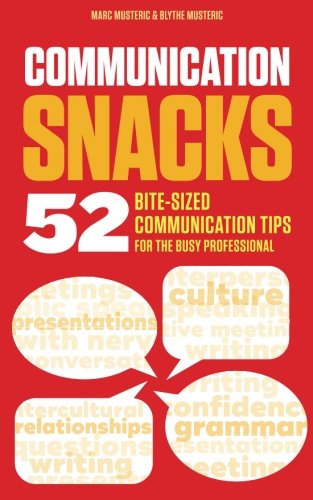Business English

What is Business English and how is it different from “regular” English? Business English includes the communication skills necessary to do your job well. Conducting business in a new country can be difficult because it requires not only learning the language but also gaining an understanding of HOW business is led in that country.
Business English includes specific vocabulary and phrases for your particular industry, a knowledge of cultural rules such as when to interrupt or end a conversation, polite usage of the language, and skills including small talk, meetings, emails, negotiations and phone calls. Business English is not just formal English, it does not mean having perfect grammar and it is not only idioms. In order to become a more effective communicator at work, it is important to study business English.
The industry that you work in also determines a lot about what you need to learn to be a successful communicator in business English. For example, if you work in Marketing you will need a lot of descriptive adjectives and buzzwords such as “industry leader” and “cost per impression.” If you work in the IT industry, you will need to learn a lot of technical words such as “adware,” “vulnerability” and “firewall.” Salespeople should brush up on common idioms and phrases including “low hanging fruit,” “B2B” and “elevator pitch.” Culture within an industry is another important factor for a successful work experience. Things such as management style and even style of dress differ from industry to industry. To ensure your own success, you should pay close attention to all aspects of your industries culture and language.
The list below includes important business English concepts you should study.
Presentation Skills

Native and non-native speakers alike tend to speed up their speech during a presentation. While the desire to “just get it over with” is there (as well as nerves), it is very important to connect with your audience, slow down, pause and allow your listeners to absorb what you are saying. Watch these videos for suggestions on how to give a good presentation including keeping your audience focused on you, using intonation to keep them engaged, learning where to place your hands while presenting and presenting without quirks.
Lesson: Look at Your Audience #20056
Description: This video explains how to connect with the people in your audience, hold their interest, and maintain control by simply keeping your eyes focused on them. You will observe in this video how the speaker’s connection with us, his audience, is interrupted when he looks at his screen for an extended period of time. You will then see how our attention is retained when he keeps his eyes focused primarily on us, after only a brief glance towards the screen.
Lesson: Oral Presentation Skills and Voice Gestures #20055
Description: In this oral presentation skills video, you will learn to use intonation to underscore what you have to say. Think of intonation as “gestures” for your voice. You will learn how adding vocal gestures to your speech creates a more audibly interesting presentation that will capture and retain audience attention. This lesson focuses on the three pitch levels used in speech; you will learn to use them strategically to emphasize points and to communicate confidence. Watch the video a few times, then practice speaking some of Marc's example sentences. Imitate as closely as you can the pitch levels he uses for each example.
Lesson: Presenting Smoothly Without Quirks #20043
Description: This video teaches you how to give a smooth presentation that is free of quirks, i.e., distracting physical habits that divert audience attention away from you and your message. Some of the most common physical quirks are demonstrated. You will learn how video taping yourself can reveal any nervous habits that you don't realize you have. You will learn about the “presentation strike zone," a safe area for your hands to occupy as you speak. Finally, you will learn some acceptable replacement gestures that give your hands something to do and reinforce what you want to communicate.
Lesson: Hand Gestures While Presenting #20044
Description: This video demonstrates the “presentation strike zone,” the area of your body between your shoulders and waist that your hands should occupy when you speak before an audience. Observe how limiting any hand gesturing body language to this area makes it easy for your audience to see both your hands and your face at one glance. The speaker demonstrates how gesturing outside this area can be distracting and ineffective; such hand motions should only be used when audience attention is purposely being directed towards something outside of the strike zone.
Email Writing Skills

Email has become an accepted and necessary part of business communication. Do you feel confident in your email writing skills? If you do not practice good email etiquette and style, the receiver may not understand your message, take you seriously or respect you. It is very important to use polite language and take note of your tone, even in a complaint email.
Lesson: Writing a Complaint Email – #90074
Description: This lesson is designed to help you write an effective letter of complaint. Although customer service issues can often be resolved in person or over the phone, submitting a complaint in writing can be highly effective for getting results. Learn what information to include and the questions to ask when you write your complaint email or letter. A sample complaint letter is provided to serve as a template to get you started.
Lesson: Introduction (Cold) Email Template – #20030
Description: This page provides a template for writing a cold introduction email, an email you send to introduce yourself to a new contact. Two additional sample scripts are included to guide you as you compose follow-up emails. One of the scripts is a suggested response for when your new contact wants to meet you; the other tells you what to say when the contact does not.
Phone Skills

One of the most difficult things to do in a second language is to conduct business over the telephone, much less cold calling someone. It is more difficult because it is harder to clearly hear the other person, the speakers are unable to see each other for nonverbal cues, and when you may be calling could be a bad time for the receiver. A clear, direct message can help make a call successful. Make sure you explain who you are and why you are calling and try avoid being “too wordy.” Review the following cold call and voicemail scripts to assist you before making a cold call.
Lesson: Cold Call Phone Scripts – #20017a
Description: This lesson provides a script to follow to compose an effective cold call, a phone call you make to introduce yourself to a new contact. You will be guided to personalize the script by plugging in information about you, your company and the services your company has to offer. Additional script templates provide follow-up question to ask when your contact is interested in meeting with you. One final script tells you what to say and ask when your contact does not want to meet.
Lesson: Cold Call Voicemail Scripts – #20017b
Description: This lesson provides a script to follow when composing a cold call voicemail, a voicemail that you leave to introduce yourself to a new contact. You will be guided to personalize the script by plugging in information about you, your company and its services, and how you can be reached. Follow-up scripts are provided to serve as templates for leaving second and third voicemails attempts.
Lesson: Verbs for Your Self-Introduction – #20065
Description: This lesson gives examples of the most common verb tenses used in self-introductions. It explains when to use present, past, and present perfect tenses when talking about yourself and your background.
Lesson: Prepositions for Your Self-Introduction – #20066
Description: This lesson gives examples of the most common prepositions used in self-introductions. It explains when to use at, in, on, with, for, and since when talking about yourself and your background.
American Culture

An important part of understanding American business English is understanding American culture. Most business conversations relate to culture in some way. Use the lessons below to improve your understanding of American culture.
Lesson: How Americans Celebrate Major US Holidays
Description: It is important to understand how Americans celebrate their holidays if you do business in the US. Read about what to say and do on New Year’s Eve, Valentine’s Day, July Fourth, Thanksgiving, Black Friday, and Christmas.

 About MyOvient
About MyOvient Contact Us
Contact Us

